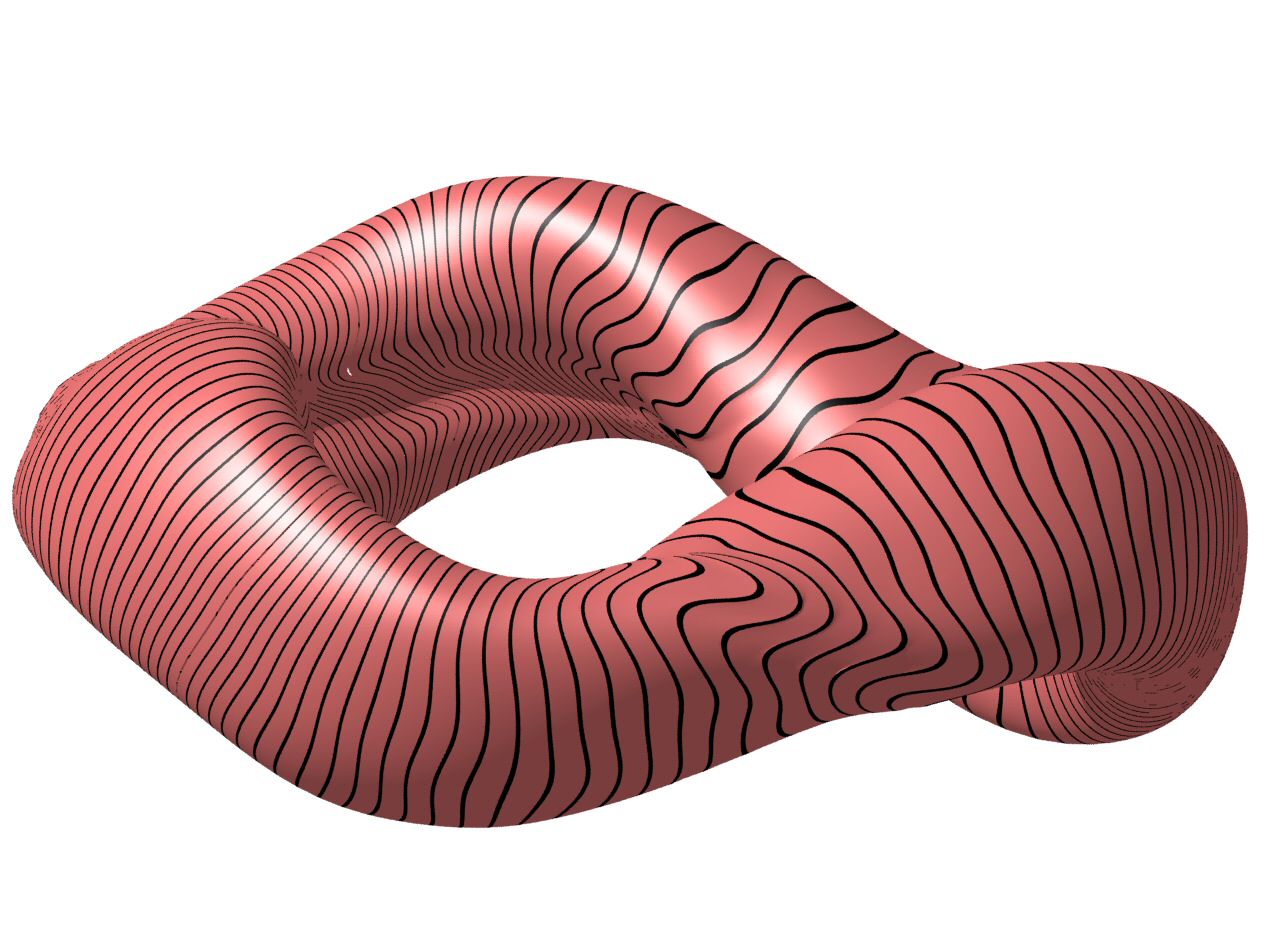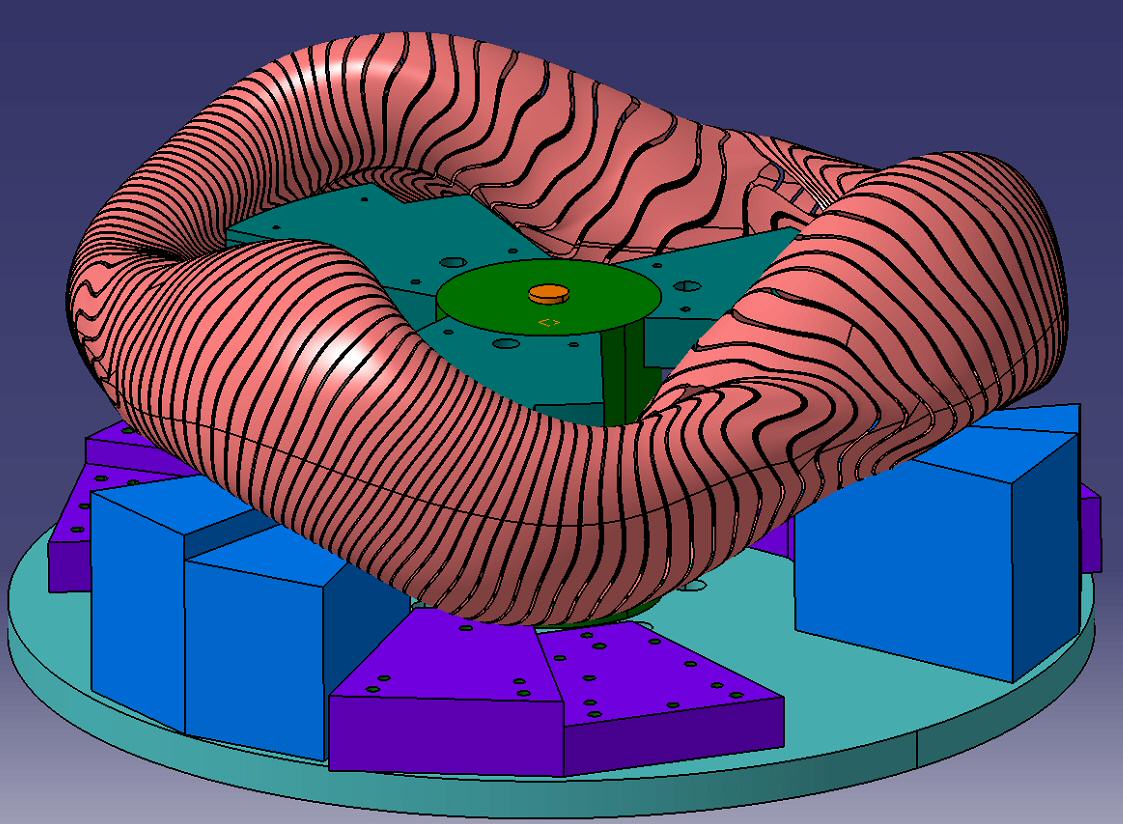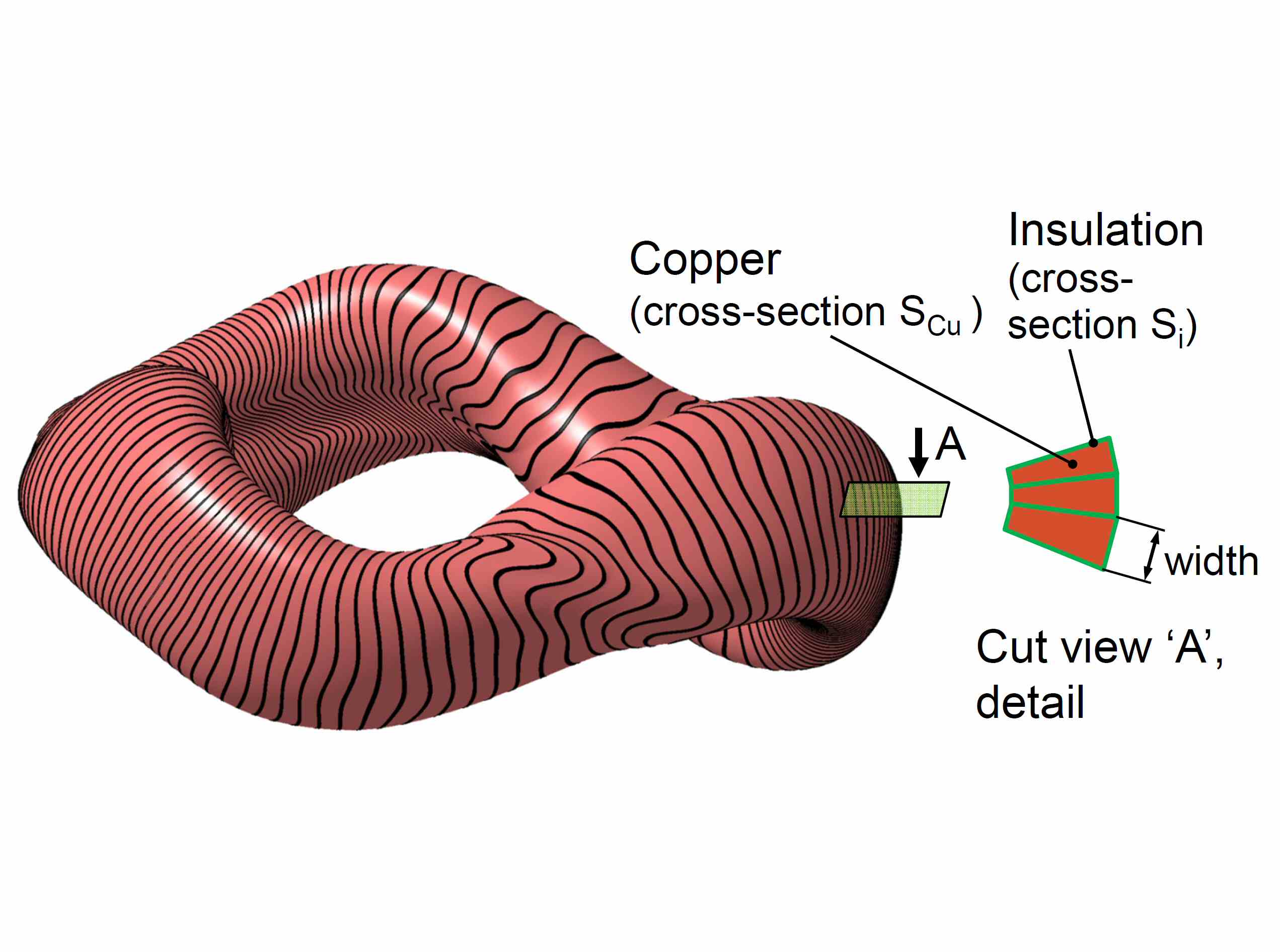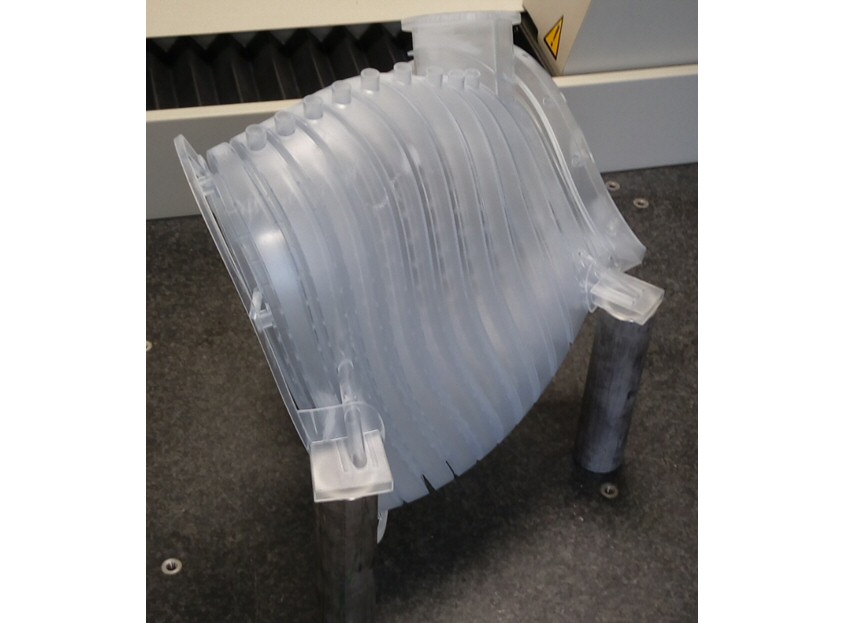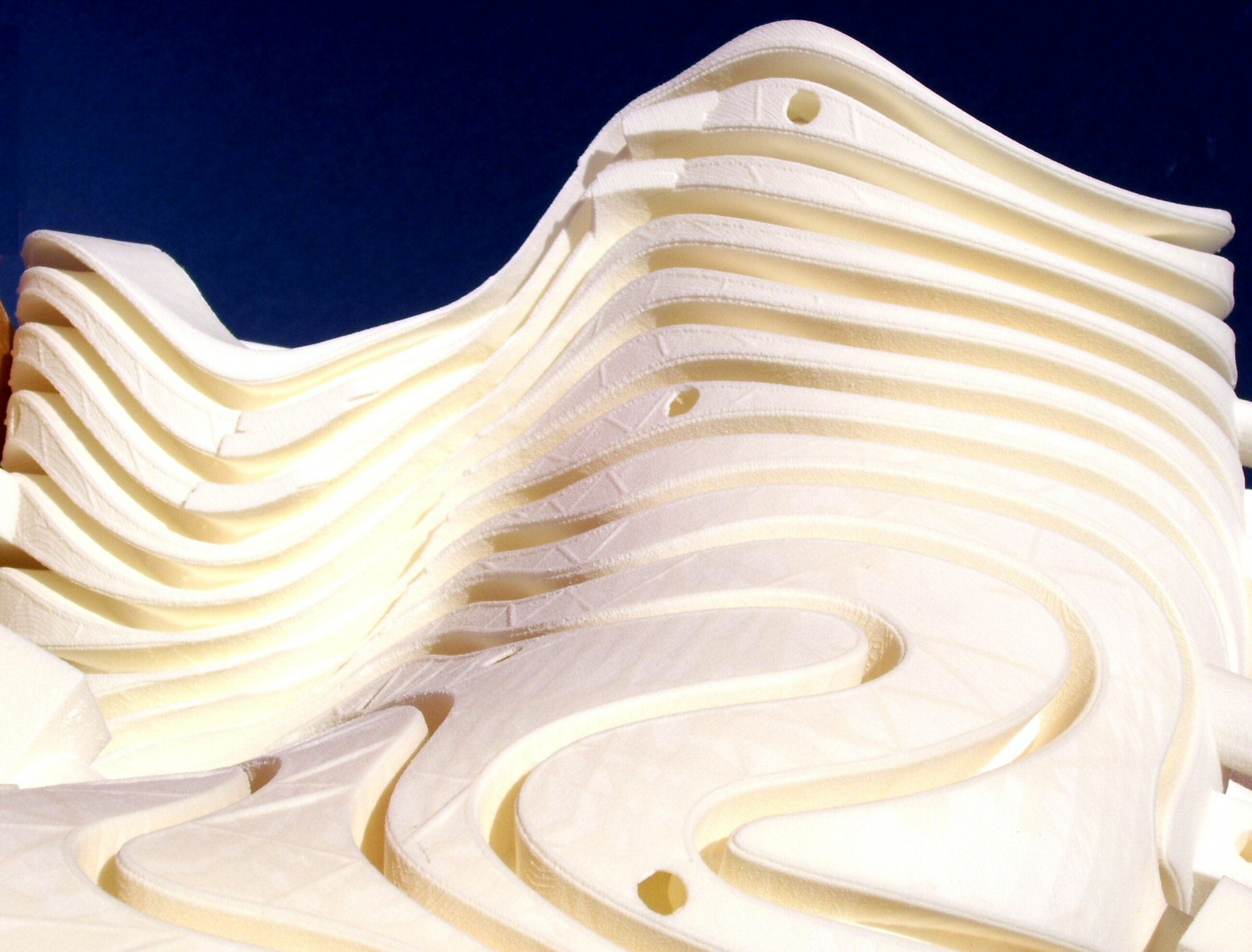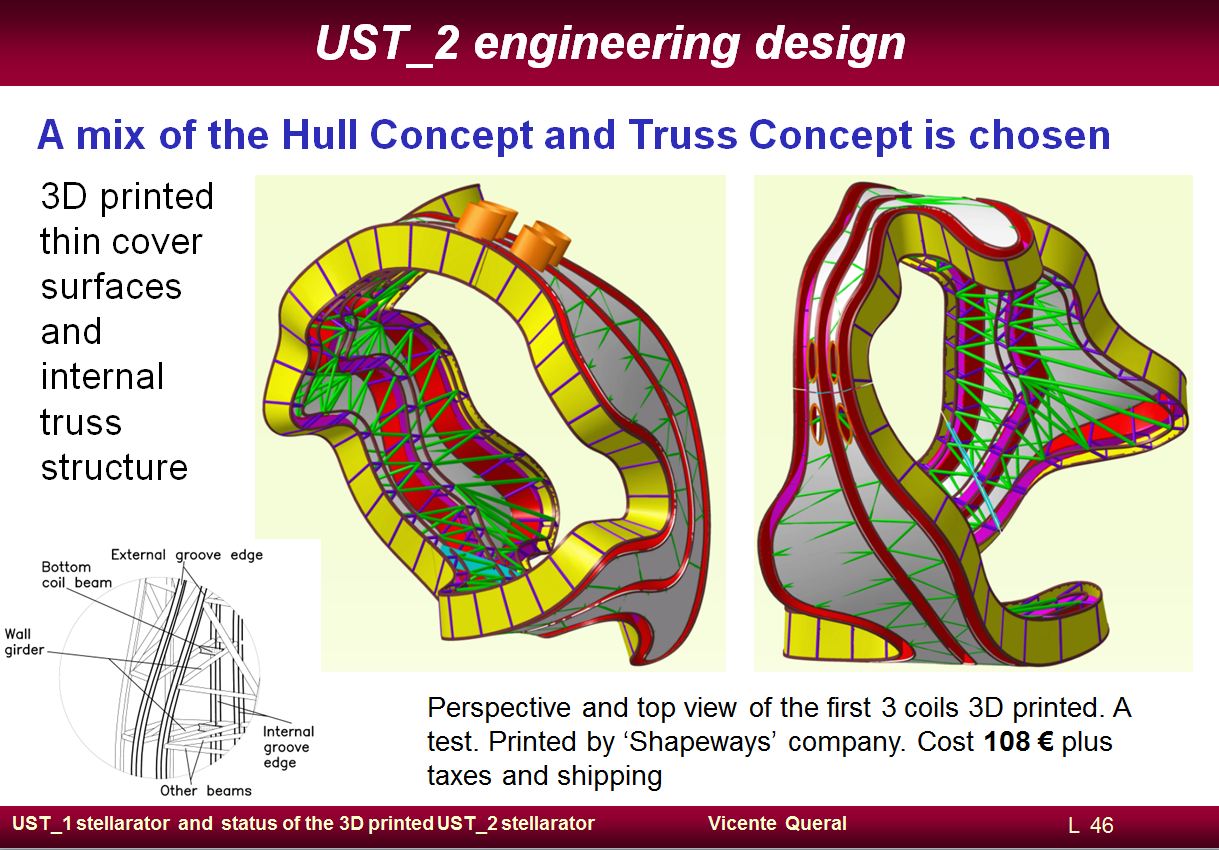 |
 |
 |
|---|---|
| Home | Vying Fusion Energy | UST_1 | UST_2 | i-ASTER | My PhD Th | CV | NEWS | About Fusion | Contact |
|---|
i-ASTER (Preliminary conceptual design completed. Device not built yet!) Link to scientific paper on i-ASTER |
|||||
|---|---|---|---|---|---|
|
i-ASTER variable cross-section coils |
Concept of dechable (half)periods |
Stress in the monolithic coil support |
|||
|---|---|---|---|---|---|
|
i-ASTER concept |
i-ASTER physics |
i-ASTER technology |
|||
| V plasma = 30 m3 | B = 10 T | High-field | ignition | Variable cross-section Cu coils | Lithium divertor-wall |
|
Concept of i-ASTER coils and supports |
|
|
|||
|
i-ASTER is a high-field, small size and resistive-magnet stellarator concept designed to reach plasma ignition and study burning plasmas. It is not a power plant prototype. i-ASTER follows the line of IGNITOR and FIRE designs of high-field tokamaks. i-ASTER is characterised by massive copper coils of variable cross-section, detachable periods, and a lithium wall and divertor. The operating point is selected at the frontier of the physics and technological limits. Thus, a high-field is taken in order to obtain a small size, which is potentially more cost-effective for a experimental device. Simultaneously, a reactor-relevant beta (plasma kinetic pressure normalized to the magnetic pressure, in other words, the achievable plasma pressure at certain magnetic field) is taken. The combination of high-field and notable beta gives a large power density (fusion power per m3 of plasma). Also, the power load on the power extraction systems is high but acceptable, essentially due to the favourable ratio plasma surface to plasma volume in small devices. i-ASTER aims at, rapidly and at modest cost, achieving and understanding ignition, and studying alpha-particle physics in ignited or near-ignited plasmas in a small fusion device. This physics will be only partially investigated in ITER. Thanks to its high power-density, i-ASTER would serve the additional goal of testing and optimizing power extraction systems, e.g. lithium-based. Also, it would complement the stellarator research line in the high plasma pressure range, advance technologies for high field fusion devices and for the manufacturing of strong stellarator magnets. Some features of i-ASTER are: Magnetic field 10 T, plasma volume 30 m3, ave. beta 5%, fusion power 1.4GW thermal, power density 45 MW/m3, divertor power load 30 MW/m2. Additive Manufacturing combined with fibre reinforced resin is planned for the construction of the strong support for the coils. Read more.
Additively manufactured scaled-down prototype of coil support |
The working point of i-ASTER (see plot above) is selected at the physics and technology limits. Plasma volume = 30 m3 and B = 10 T resulted. Scaling laws are used to estimate the minimum field needed for ignition, fusion power and other plasma parameters. These parameters are comparable to high-field tokamaks, e.g. IGNITOR and FIRE. Other parameters of i-ASTER are major radius R = 3.8 m, plasma surface 95 m2, Aspect Ratio 6, Peak plasma temperature at ignition = 14.6 keV, plasma densite lower than the Sudo density limit and pulse length 2 seconds. The load on the divertor targets (30 MW/m2) was calculated assuming 50% improvement in wet area (area of divertor targets) with respect W7-X, factor 2 for sweeping and 50% of load radiated by plasma edge. An island divertor and a first-wall almost entirely covered with low-temperature (low recycling) liquid lithium is planned. Initial neutronics estimations indicate that no major neutronics difficulties are envisioned. Read more.
Picture to be UPGRADED
|
Venture Project proposal (pdf) [Will be upgraded] BEING WRITEN The UST_3 development, planned to start at the end of 2015, is aimed at building a small but powerfull stellartor. UST_3 will be fabricated by the 3D-printing and construction methods developed for UST_2, and some other new techniques. It will contain thick copper coils to achieve high magnetic field and high plasma temperature and density, that is, high tripple product (high properties for so a small device). An ideal UST_3 should fulfil three aims: i) to be turbulence optimised to some extent (and also neoclassical) at high beta (10-15% beta limit), ii) to implement radical innovation for power extraction (external divertors) and iii) massive copper coils. International collaboration and funds are being sought for the endeveour.
Allure Ignition Stellarator reactor and strategy
______________________________________
[This figure belongs to UST_2] Presentation "UST_1 stellarator and Status of the 3D printed UST_2 stellarator", 3 October 2013. Given in PPPL,Princeton, USA. Also similar given in ORNL and Columbia University, USA See presentation.
Design of 3 coils for the 3D printed low cost moulded structure
|
|||
|
UST_2 Sponsors |
 |
 |
Supporters of UST_2 | ||
| Last update 25-02-2024 , | |||||
